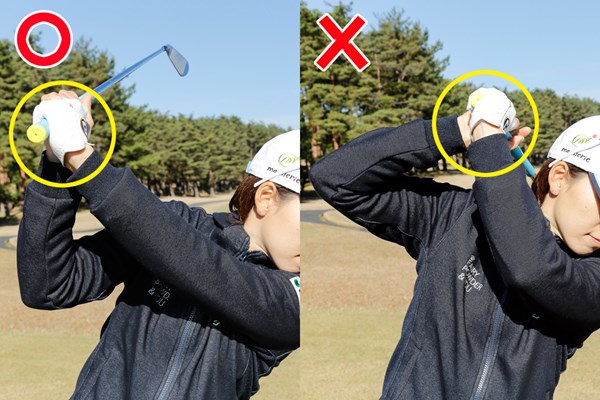Which golf swing doesn't collapse on the course?
[Amateur golfer's concern]
"I swing with good balance at the practice range, but the finish collapses when I come out on the course. What should I do and how?"
I go well on the practice field for some reason, but if I don't follow the basics on a golf course with different shot situations, I'll be accidentally connected right away.
[Resolving the issue]
Tilting forward from the pelvis!

Make sure you tilt forward from the "pelvis" at the address to swing using your body firmly. Maintaining the foreground position, which is the basis of swing, or torsion required for flight, cannot function unless the pelvis is foreground.

Tilt your chest straight by tilting it exactly forward from the root of your leg. Unstoppably turning your back over or having a round back is typical of bad posture. Be careful because the effect on the shot is really huge, as professionals tend to forget the foreground from this "pelvis" when they get tired.
The position of the hand is just below the shoulder

At the same time, he is also paying attention to the position of his hand. Even if you swing with your body for the first time in a long time, if your hand is not in the right position, your ball will not be affected.

The standard, clearly foreground, is the position of the hand just below the shoulder. When tilted forward in the pelvis, hold the club where the rest of the arm is stretched out without putting any effort into it.
It doesn't break down the 70% swing "triangle"!

Iron isn't a flying club, it's a club that distinguishes the exact distance. In other words, "big swings" are prohibited. I'm always maintaining my swing with 70% power.

The point is to swing without breaking down the triangle made by both arms as an address. It does not have the consciousness of the arms, but is conscious of continuing to rotate while maintaining the triangle that connects the shoulders. If the chest exercise exceeds the arm exercise, the triangle does not collapse.
I'll leave you two fingers!

Also, "how to grip the grip" is important. Amateurs often find the distance on the iron, and hold the grip end close to the edge, but I always hold the grip end about two minutes short.

This is because if you hold it to the end, your wrist will be easier to move, it will be difficult to control the movement of your arm, and it will cause the triangle to collapse. If you hold the club short, it will be easier to be conscious of the compact swing naturally and to swing in a balanced manner where you are aiming. In practice, be aware of this and do address checks and swings.